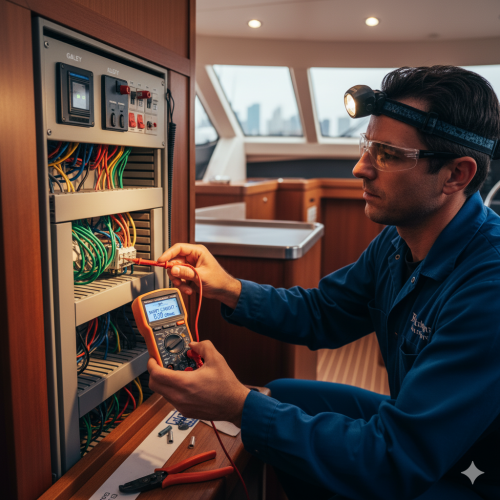
Chasing Electrical Gremlins: Your Guide to Parasitic Drains & Tripping Breakers
Few things are more frustrating for a boat owner than dealing with mysterious electrical issues. A battery that's always dead or a circuit breaker that won't stay reset can ruin a day on the water. These "electrical gremlins" often stem from two common culprits: parasitic battery drains and circuit overloads. This guide will help you diagnose and solve both problems.
Part 1: Finding the Source of a Parasitic Battery Drain
A parasitic drain is a small, continuous electrical load that slowly drains your batteries even when you believe everything is turned off. It’s the reason you leave your boat with a full charge and come back to find the batteries mysteriously dead.
Symptoms of a Parasitic Drain
- Batteries are consistently low or dead after the boat sits for a few days.
- Voltage on your battery monitor drops steadily overnight with no known loads running.
- You need to use shore power or run the engine more often than usual to keep batteries topped off.
How to Find the Drain: A Step-by-Step Guide
- Prepare for the Test: Turn off all lights, electronics, and appliances on your boat. Disconnect shore power and turn off your main battery switches.
- Set Up Your Multimeter: You will need a multimeter that can measure DC amps. Set it to the highest DC Amps setting (usually 10A).
- Disconnect the Battery: Disconnect the negative battery cable from your main house battery bank terminal.
- Connect the Multimeter: Connect one lead of the multimeter to the negative battery post and the other lead to the disconnected negative battery cable. This forces all the electricity being drawn by the boat to flow through the meter.
- Read the Drain: With the battery switch still off, you should see a reading of 0.0 amps. Now, turn the main battery switch on. The reading you see on the meter is your parasitic drain. A small drain (under 50 milliamps or 0.05A) might be normal for things like stereo memory, but anything significant needs to be found.
- Isolate the Circuit: Go to your main DC electrical panel and pull one fuse or turn off one circuit breaker at a time. Watch the multimeter after each one. When the amp reading drops significantly, you've found the circuit with the problem!
Pro tip: Common culprits for parasitic drains are bilge pump float switches with indicator lights, stereo memory wires, faulty USB charging ports, and carbon monoxide detectors. Start by checking those circuits first.









